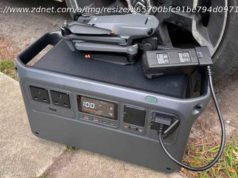Wondering what’s taking up so much space in System on your Mac? You can reduce system storage on a Mac and reclaim space.
If you are struggling with not enough storage and trying to make more space on your Mac, Apple helpfully outlines ways to save space and shows some mysteriously named elements taking up storage space. In macOS Ventura and later, If you click on the Apple logo > About This Mac > More Info > General > Storage Settings (or in macOS Monterey and older: Apple logo > About This Mac > Storage), you will see lots of information about what is taking up space on your Mac as well as tips to help you manage it.
Among some mysteriously named elements taking up storage space you may see the likes of System, System Data, macOS and Other and wonder if you can delete them. We address how to delete Other on a Mac in a separate article. Here we will be addressing System and System Data.
Note: Apple has made various changes to the way it displays this information in macOS Ventura and macOS Sonoma, so we have updated this article to reflect this. As a result, you will see examples pre- and post-Ventura. To find out more read How Apple has revamped System Preferences in macOS Ventura.
PROMOTION
CleanMyMac X | Free up System storage
Use CleanMyMac X to find hidden junk and free up the unseen “System” storage. Locate large old folders, background apps, and heavy memory consumers. Tune your Mac for maximum speed, and keep it malware-free and secure. Make sure you use the Smart Scan weekly to help your computer stay productive all year round.Can you delete System on the Mac?
First, we’ll address why you might want to delete System or System Data on your Mac and whether you should.
If your Mac is low on storage it can cause problems. You might see a message that your start-up disk is almost full, for example, and if you ignore that you might find you can’t even start up your Mac! Low storage can also slow your Mac down and cause other issues that stop it from running at its best. You may also find that you can’t install an update to macOS if you don’t have enough free storage. If you aren’t sure how to see how much disk space your Mac has read: How to check how much disk space you have.
We’ll assume that you’ve already been confronted by System or System Data taking up an astonishing amount of storage on your Mac and are thinking that you’d quite like that 50GB or so back.
The question of whether you can reclaim any of the space given over to this class of storage is complicated somewhat by the fact that Apple seems to give it a new name with every version of macOS, as you can see from the images below:
macOS Ventura & Sonoma: System Data (and macOS)
macOS Monterey: macOS
macOS Big Sur: System (and Other)
Regardless of the version of macOS you are running, those graphs indicate how much of your storage is attributed to certain types of files on your Mac. As you can see from the image above, System was using up 19.63GB on our Mac in Big Sur, but the number is a little more concerning in Ventura at almost 47GB. For each user, the System size is different so it’s possible it can be even bigger.
Whether it’s referred to as System, System Storage, macOS, or something else, you can reduce the amount of space taken up by this section of storage, but you will need to identify what is being attributed as Storage (or whatever Apple’s named it in your version of macOS).
Follow the steps below to find out what’s in System or System data so you can free up some space on your Mac. What is in System or System Data in Mac storage (or macOS)?
Whether Apple calls it System, System Data, or macOS, this is a catch-all title for various elements that are spread across your Mac’s drive. Essentially these are all the same thing: files that don’t fall into the other categories, usually data and files used by macOS, caches, temporary files, backups, plug-ins and so on.






